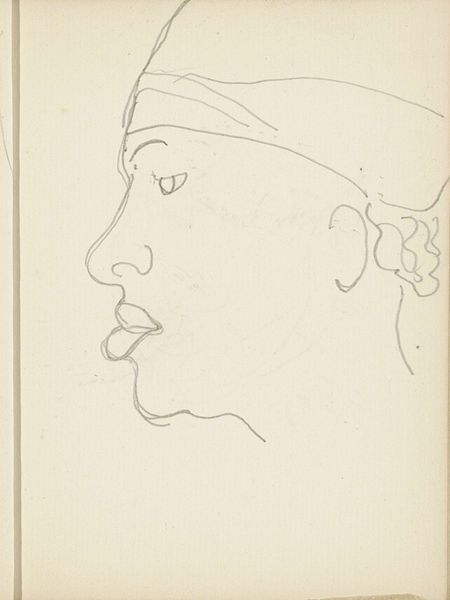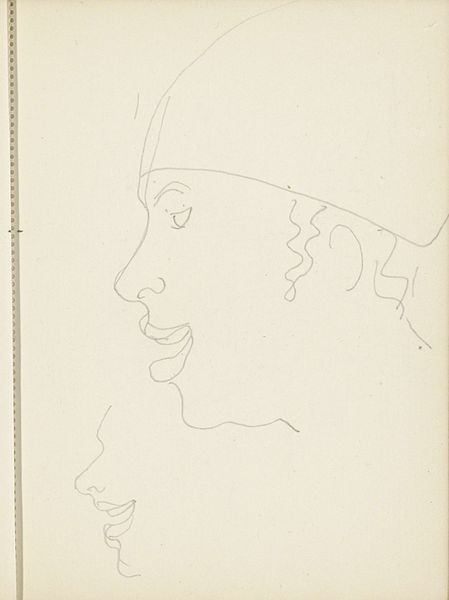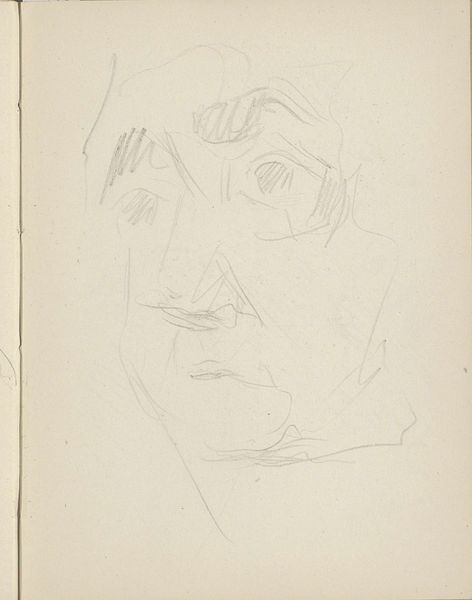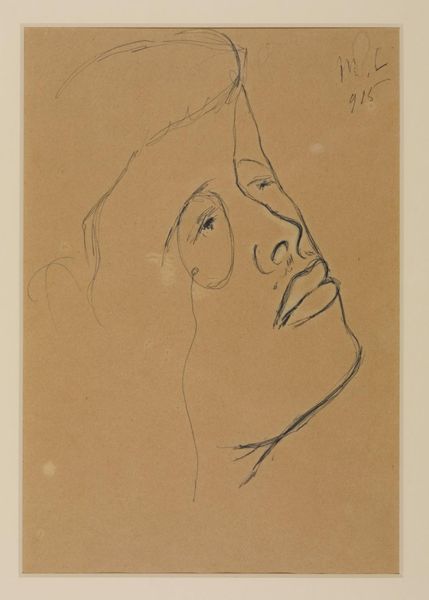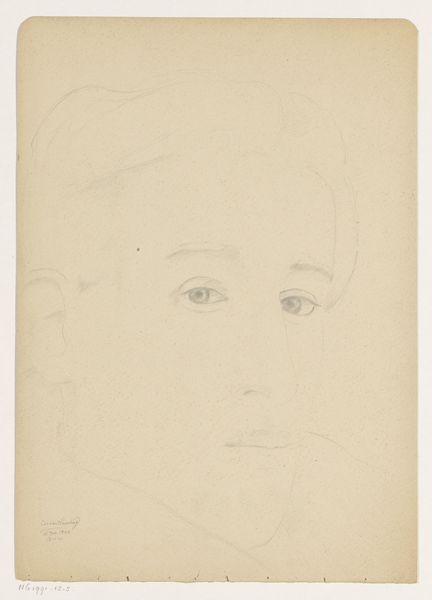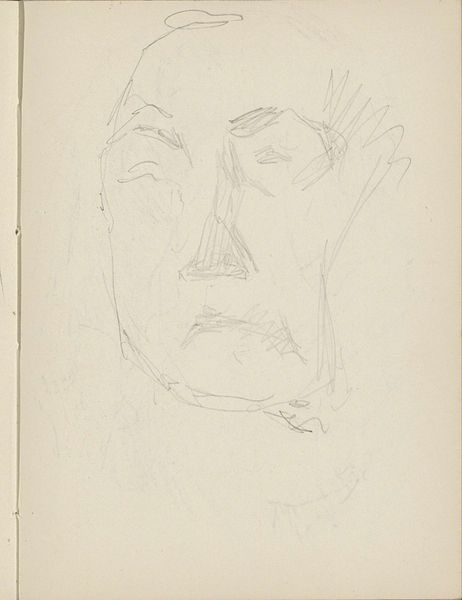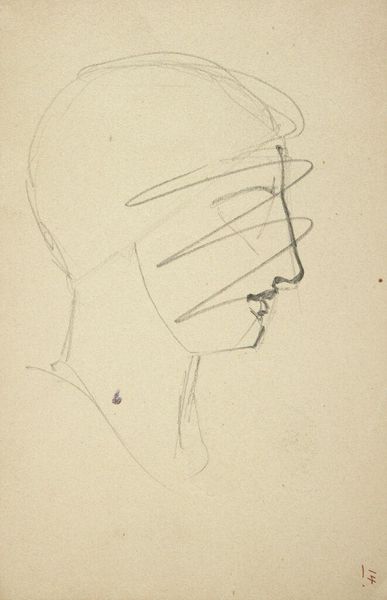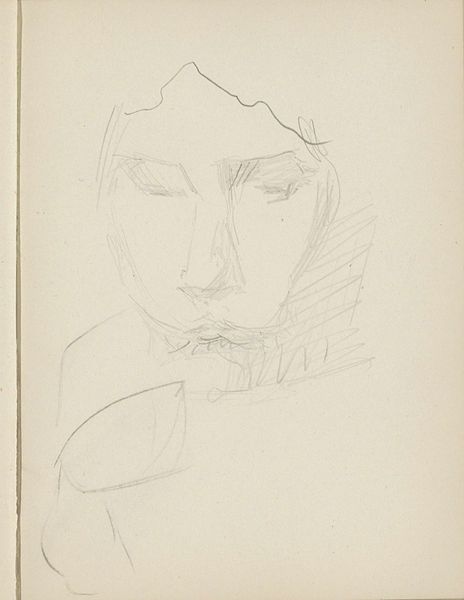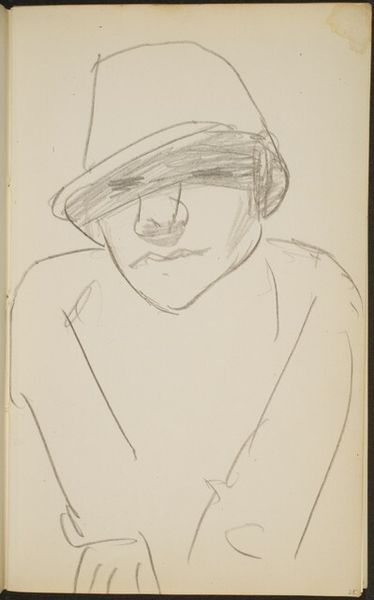
drawing, pencil
#
portrait
#
pencil drawn
#
drawing
#
toned paper
#
light pencil work
#
pencil sketch
#
old engraving style
#
figuration
#
personal sketchbook
#
ink drawing experimentation
#
pencil
#
sketchbook drawing
#
portrait drawing
#
sketchbook art
Copyright: Rijks Museum: Open Domain
Curator: There's something quite tender about this study, isn't there? Here we have "Hoofd van een Afrikaan"—Head of an African Man—a pencil drawing, the date attributed sometime between 1916 and 1945. It's currently held in the Rijksmuseum. Editor: It's deceptively simple. A quick sketch, but the gaze… there's a quiet strength, wouldn’t you say? I'm curious about the kind of pencil and paper the artist selected to render this specific sketch. Curator: Absolutely. You see how lightly the artist allows the pencil to meet the paper? The material suggests that perhaps it’s part of a sketchbook page, or simply a study—an intimate moment of observation rather than a formal portrait. Editor: Which makes me think about the availability of these art materials. The type of graphite, its provenance, and how the toned paper itself, perhaps recycled, might dictate certain artistic choices during that period of resourcefulness. Curator: Indeed. The simplicity strips away artifice, leaving us with the pure act of looking. I wonder about the sitter. Was he a paid model, a friend, or a stranger encountered in the street? This element always pulls me in. Who gets seen, and by whom, becomes a powerful act. Editor: I completely agree. Moreover, one can muse on the labour behind its support: How does its value relate to the paper makers and those who gathered raw materials, the ones who ensured artists could keep visualizing bodies this way. Curator: I keep circling back to that gaze. So direct, yet also vulnerable, and yes, there is some ambiguity here. As we ponder his place, as the other, being scrutinized with the materials within social conditions in mind. We begin to understand more deeply about what this artwork stands for. Editor: That’s how materiality offers us so many stories; if we start thinking about that, rather than the intention of an artist alone. Curator: Agreed, and perhaps it encourages us to scrutinize the frameworks within which these encounters occur. And so even with such a seemingly modest work as this drawing of an African head, the potential of art is limitless. Editor: Yes, it opens dialogues beyond just the aesthetic and speaks of real people and conditions of their time.
Comments
No comments
Be the first to comment and join the conversation on the ultimate creative platform.
